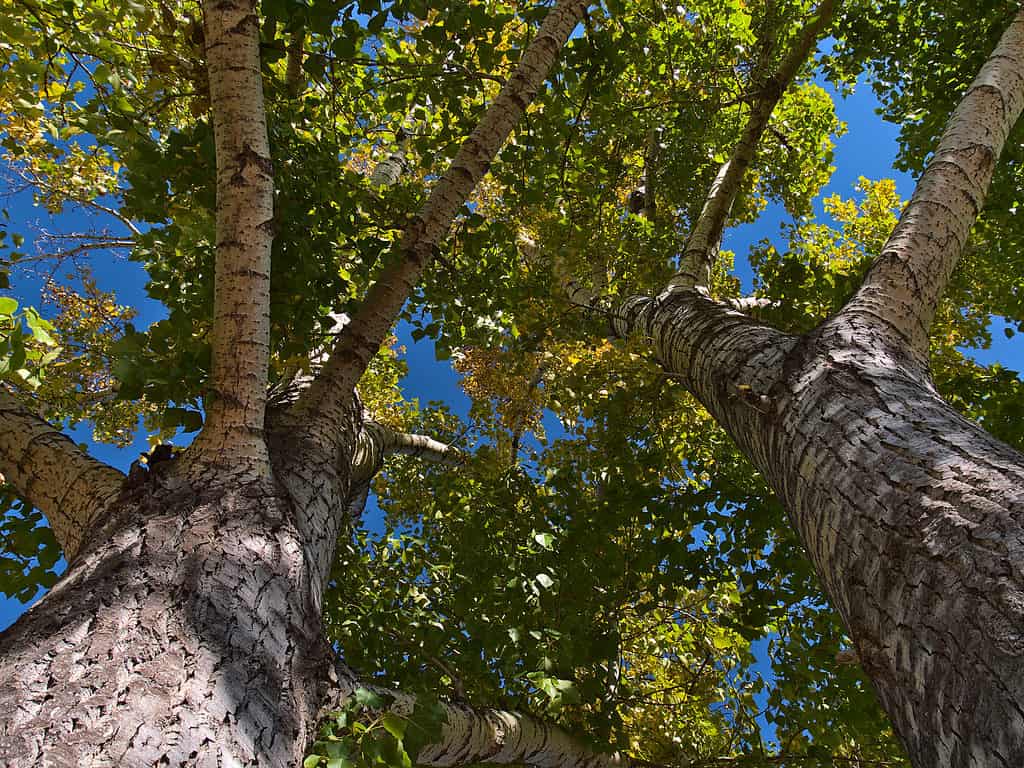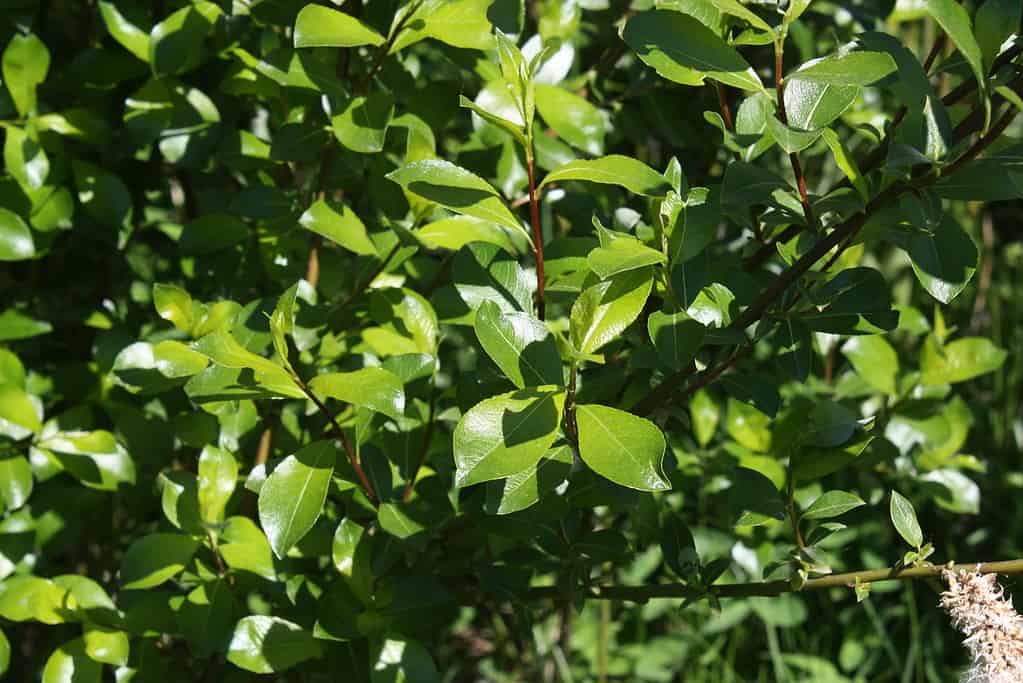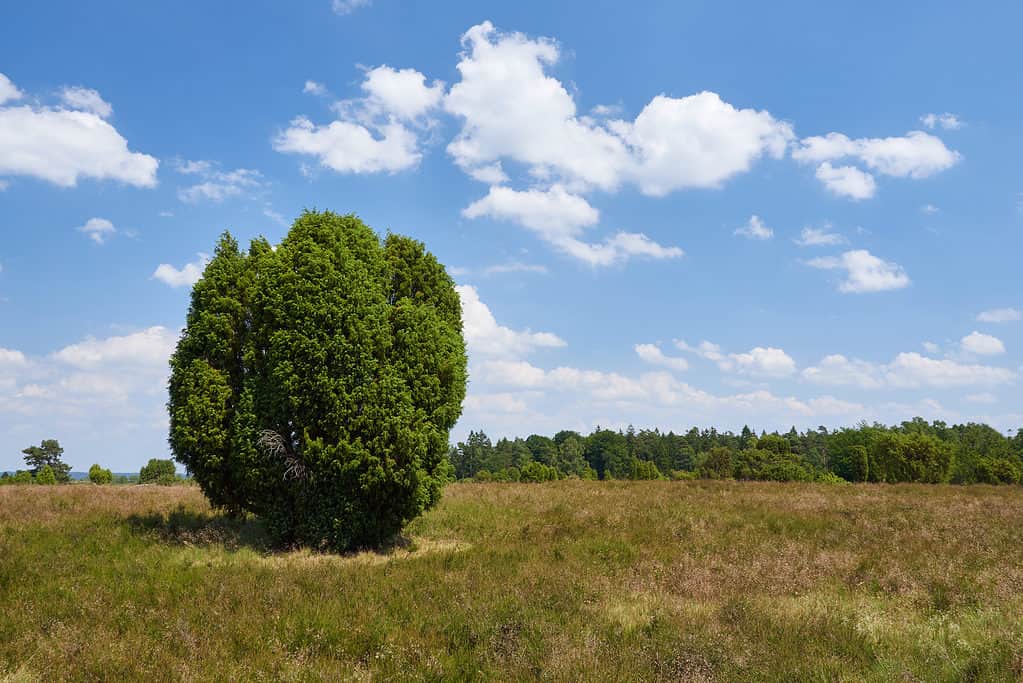Iceland is a beautiful, barren, and breathtaking country. Pictures of this stunning country show volcanoes, long rivers, geysers, and black beaches. Although there is a lack of forests and trees in Iceland, it wasn’t always like this. Can you believe that at least 40% of Iceland was covered in dense forests thousands of years ago? Currently, there are afforestation efforts underway to increase the number of trees. Interestingly, most of the tree species growing in the country aren’t native. Instead, some are hybrid species made to withstand the interesting geography of Iceland. Still, there are a few species throughout Iceland that are native. Follow along to learn more about five incredible trees native to Iceland and the country’s current afforestation attempts.
Iceland’s Geography
Europe’s westernmost country, Iceland, is small, with a population of around 300,000. Iceland is a volcanic island near Greenland with frequent volcanic activity. About 11% of the country is covered in glacial ice. Iceland, also known as “the Land of Fire and Ice,” covers over 39,769 square miles. It is nearly the same size as Portugal or the U.S. state of Kentucky. Apart from the main island, Iceland also has about 30 minor islands. One of the more populated minor islands is Grímsey. A lot of what draws people to visit Iceland, apart from the friendly people and unique culture, are the many glacial lakes and rivers. Although there is a population of 300,000, many people live in the Reykjavík region in Faxaflói Bay. This is likely because the Highlands of Iceland is nearly entirely uninhabitable, with cold mountains, sand, and lava fields.

Dramatic view of the geothermal area Hverir (Hverarond). Location place Myvatn lake, Northeastern region, Krafla volcano, Iceland, Europe.
©Creative Travel Projects/Shutterstock.com
Why Is Iceland so Treeless?
Currently, most of Iceland is bare, although long before the Vikings, about 25% to 40% of the island was covered in thick forests with tall native trees. One of the main reasons Iceland is now so treeless when it previously wasn’t was because of Viking settlers. When Vikings settled in Iceland, they needed the wood from the trees for warmth and to build. The climate in Iceland was warmer but still cold. Sheep also caused soil erosion. Human settlers and their animals weren’t the only ones to blame, though. The conditions of Iceland made it hard to recover from deforestation, especially because of the many volcanic eruptions that caused much of the land to be infertile.
Native Icelandic Trees
Iceland has over 1,000 plant species and over eighty species of trees. However, most of the trees in Iceland are not native. Listed below are five native trees you can find in Iceland.
European Aspen (Populus tremula)
European aspen trees are native to Iceland and yet rare. Other names for European aspens are “Eurasian aspens,” “common aspens,” “quaking aspens,” or simply “aspens.” You can find these beautiful trees in cool temperate regions in Europe and Asia. Interestingly, this tree also grows in one specific area in northwest Africa in Algeria. This deciduous tree is tall and thick. It typically grows about 130 feet tall and 33 feet wide. The trunk’s diameter is about 3 feet and 3 inches. European aspen trees are beautiful, with green and grey bark. Mature trees have darker bark than young trees. Adult leaves are almost entirely round and bright green. They sway in the wind, possibly for their flat petioles. European aspen trees are also very old. Experts have analyzed fossils from the Kızılcahamam district in Turkey and they date back to the early Pliocene age.

European Aspen (
Populus tremula).
©iStock.com/Timon Schneider
Tea-Leaved Willow (Salix phylicifolia)
Tea-leaved willow trees are native to Northern Europe, including Iceland. However, you can also find them in Russia, Finland, and the Faroe Islands. These trees thrive in wet conditions and can heights up to 30 feet. However, they can also be as short as 1.5 feet. Fun fact, this shrub was the first bush found on the new volcanic island, Surtsey. The island is near Iceland, has a surface area of 0.54 square miles, and surfaced during an eruption on 14 November 1963.

Tea-leaved willow trees (
Salix phylicifolia) are native to Northern Europe, including Iceland.
©Anneli Salo, CC BY-SA 3.0 <https://creativecommons.org/licenses/by-sa/3.0>, via Wikimedia Commons – License
Downy Birch (Betula pubescens)
Downy birch trees are one of the most common native trees in Iceland. They live and thrive in harsh conditions. Other names for this species include “white birch,” “European white birch,” “moor birch,” or “hairy birch.” It’s widely spread throughout Europe and Asia. This species is often confused with other birch species, specifically silver and dwarf birch. However, downy birch trees adapt well and can live in heavy soil with poor drainage. These trees are tall, with slender trunks. They measure between 33 to 66 feet tall. Three varieties are recognized: the Betula pubescens var. pubescens, B. p. var. litwinowii, and B. p. var. pumila. Downy birch trees are essential for the environment. They provide shelter and food for animals and insects, like the larva of the autumnal moth. These trees also have many uses. For example, some artists use high-quality charcoal made from the bark of downy birch trees.

Downy birch trees (
Betula pubescens) are one of the most common native trees in Iceland. They live and thrive in harsh conditions.
©jessicahyde/Shutterstock.com
Rowan (Sorbus aucuparia)
Another native shrub or tree native to Iceland is the rowan tree. However, it is an uncommon species to see. If you see a rowan tree in Iceland, it’s likely because it’s growing in more favorable conditions. Rowan trees are found throughout most of Europe and parts of Asia. You can also find the rowan tree in northern Africa. They grow about 16 to 49 feet tall. These beautiful trees produce small yellowish-white flowers that ripen into small red pomes. Many birds eat these bright red fruits. Interestingly, rowan trees belong to the rose family. While you can find these trees in Iceland, they are more common in China and the British Isles. Another name for the rowan tree is “mountain-ash.” These gorgeous trees also thrive in North America, although they aren’t native to the region. However, rowan trees are planted as ornamentals in many parks and gardens.

Rowan trees produce small yellowish-white flowers that ripen into small red pomes.
©iStock.com/TatianaNurieva
Common Juniper (Juniperus communis)
Our last native Icelandic tree on this list is the common juniper. It’s the only cone species that grow in Iceland. The common juniper is a beautiful small shrub or tree that produces juniper berries. These berries actually aren’t berries at all. In fact, they are fleshy female seed cones. Common junipers are about 33 to 52 feet tall, but their height varies. These trees have the most extensive geographical range of any woody plant. They are primarily found in cool temperate mountains. Common juniper trees have many uses. While they aren’t used worldwide for their lumber, in Estonia, juniper wood is used to produce sweet-smelling and beautiful decorative items. Juniper berries are also sometimes used in cooking, but you need to crush the berries to activate the flavor. A little goes a long way on game meat.

The common juniper (
Juniperus communis) is the only cone species that grow in Iceland.
©Thomas Marx/Shutterstock.com
Afforestation Practices in Iceland
Although only 2% of Iceland is covered in forests, there are practices and efforts underway. The government is very interested in afforesting Iceland. It’s currently being focused on because afforestation can fix soil erosion. This is common in Iceland because much of the land is used for sheep grazing. When sheep rip out the plants from the ground, the nutrients in the soil are stripped. The country is also hoping to encourage biodiversity since many of its native birds use trees for shelter. By 2100, the Iceland Forest Service hopes to have afforested 12% of Iceland. They are trying to meet this goal by planting at least three million seeds a year.
This isn’t a new trend in Iceland. In some forests, residents have been planting trees since the 1940s. For instance, a small forest in the village of Kirkjubæjarklaustur has some of the tallest trees in Iceland. They were planted by residents in the community decades ago. Some of the trees measure at least 98 feet. Sadly, many native Icelandic trees are unable to regenerate and grow quickly, likely because of volcanic activity and the lack of nutrients in the soil.
The photo featured at the top of this post is © Thampitakkull Jakkree/Shutterstock.com
Thank you for reading! Have some feedback for us? Contact the AZ Animals editorial team.






